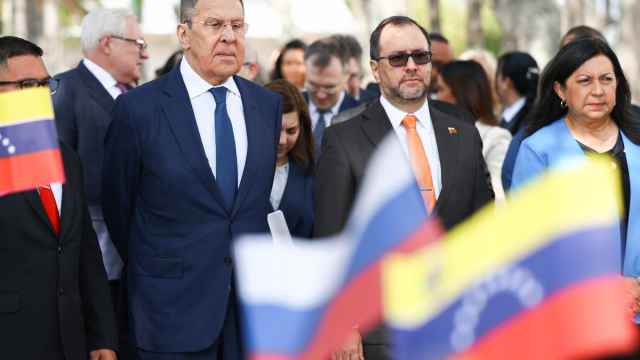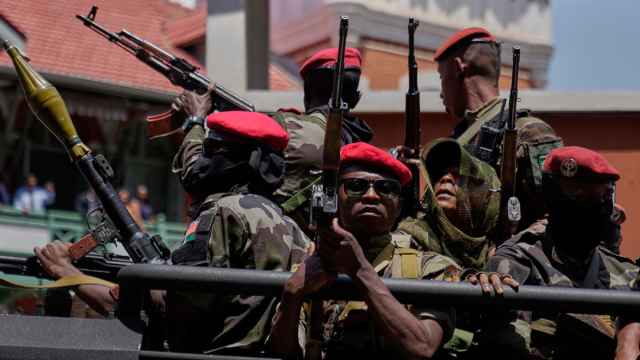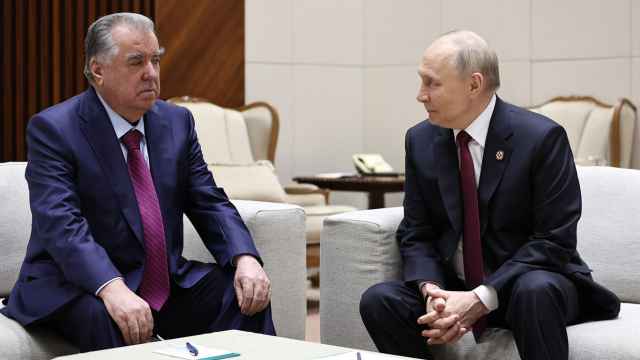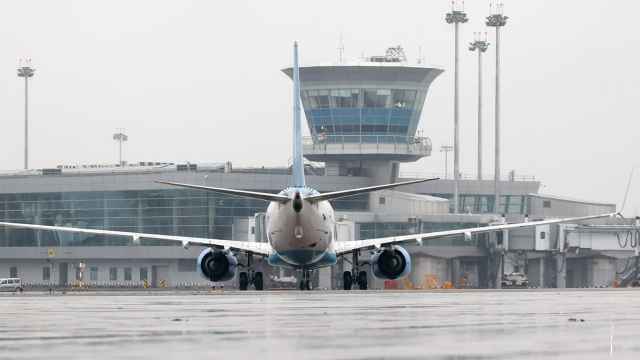ASHGABAT — Turkmenistan's South Iolotan gas field is the world's second largest, estimated to hold up to 21.2 trillion cubic meters of natural gas, British auditor Gaffney, Cline & Associates, or GCA, said Tuesday.
The deposit is key to the reclusive Central Asian state's plans of becoming a major energy supplier to Europe and China.
GCA said the South Iolotan deposit contained between 13.1 tcm and 21.2 tcm of natural gas.
The upper range of the estimate tallies with the government's view that the field could hold in excess of 21 trillion cubic meters and is a significant increase on GCA's previous estimate, made in 2008, of reserves between 4 trillion and 14 trillion cubic meters.
The new estimate for South Iolotan's natural gas reserves put it in second place among the world's largest deposits of the fuel after Iran's South Pars and ahead of Russia's Urengoi.
GCA's 2008 forecast had ranked South Iolotan as the world's sixth largest.
"Turkmenistan's gas reserves are more than enough for any potential demand over the foreseeable future, whether it be from China, Russia, Iran or Europe," Gillett said.
Turkmenistan, a former Soviet republic of 5.4 million people, holds the world's fourth-largest natural gas reserves and is seeking to diversify exports from its Soviet-era master Russia to China, Iran and Europe.
The desert nation plans to more than triple annual gas output to 230 billion cubic meters by 2030, of which it would export 180 bcm. South Iolotan, sprawling over 3,000 square kilometers about 350 kilometers southeast of the capital Ashgabat, will supply a large portion of this increase.
Official data are hard to obtain in the secretive state, where the word of President Gurbanguly Berdymukhammedov is final, but industry sources estimate current annual gas output at 40 to 44 bcm per year, below the 75 bcm per year prior to 2009.
"The current estimated data for both South Iolotan and Yashlar may well increase still further as additional data are acquired," Gillett said. Yashlar, a separate field, could contain between 1.45 tcm and 5.0 tcm, he said.
Four companies — Chinese state oil and gas firm CNPC, Petrofac Emirates and South Korea's International Corp. and Hyundai Engineering — won $9.7 billion worth of contracts in December 2009 to develop the field. They will drill and build gas plants.
Gas from South Iolotan could theoretically be delivered to the Caspian shore via Turkmenistan's planned East-West pipeline, from where it could cross the sea to Azerbaijan and link up with the planned Southern Corridor route to Europe.
The European Union agreed last month to negotiate a treaty to bring natural gas from Turkmenistan, drawing Moscow's ire.
Shipments to Russia, which buys Turkmen gas for resale to Europe, have declined after a dispute between the two countries over a pipeline rupture in 2009.
Since the end of 2009, another pipeline snaking nearly 2,000 kilometers through Central Asia has been carrying gas east to China's northwestern region of Xinjiang.
A Message from The Moscow Times:
Dear readers,
We are facing unprecedented challenges. Russia's Prosecutor General's Office has designated The Moscow Times as an "undesirable" organization, criminalizing our work and putting our staff at risk of prosecution. This follows our earlier unjust labeling as a "foreign agent."
These actions are direct attempts to silence independent journalism in Russia. The authorities claim our work "discredits the decisions of the Russian leadership." We see things differently: we strive to provide accurate, unbiased reporting on Russia.
We, the journalists of The Moscow Times, refuse to be silenced. But to continue our work, we need your help.
Your support, no matter how small, makes a world of difference. If you can, please support us monthly starting from just $2. It's quick to set up, and every contribution makes a significant impact.
By supporting The Moscow Times, you're defending open, independent journalism in the face of repression. Thank you for standing with us.
Remind me later.





